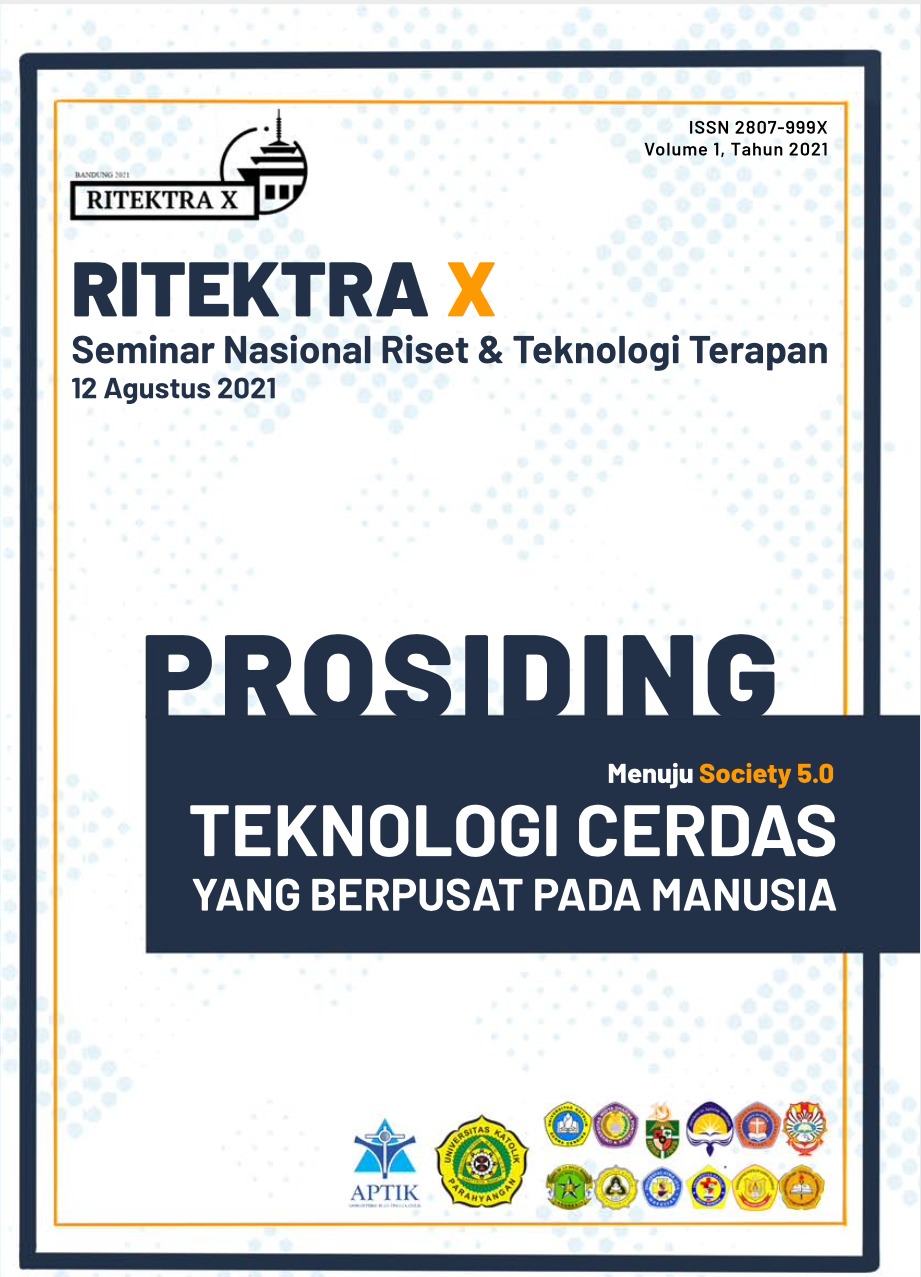Correlation Between Linear Shrinkage Value, Soil Parameters, and Soil Desiccation Cracking Pattern
Kata Kunci:
linear shrinkage, cracking pattern, plasticity indexAbstrak
Soil is one of the commonly used materials in construction. However, saturated clayey soil tends to shrink and crack when it experiences a drying process. Desiccation crack on the soil surfaces could reduce soil stability and strength, and at the same time, increases the compressibility and hydraulic conductivity of the soil. Therefore, understanding the nature of desiccation crack formation and shrinkage in the soil is essential. So that soil improvements can be made on soils that have a significant shrinkage potential and are prone to forming desiccation crack. This research was conducted to determine the relationship between the value of linear shrinkage of soil, soil physical parameters, and desiccation crack patterns in Bandung Raya. Desiccation cracking image will be processed using the Crack Image Analysis System (CIAS) program. The desiccation cracking test is conducted using an acrylic mold ±16 cm x ±16 cm x ±1 cm at the temperature of 40 °C. This research shows that the soil with the most significant potential for shrinkage and desiccation cracking is the soil with a high plasticity index value and a high percentage of fine grains. The greater the value of linear shrinkage, the soil tends to have a larger surface crack area, plasticity index value, and a more significant percentage of fine grains. In addition, although the desiccation cracking pattern that appeared on the surface looked diverse and distinct, the value of the surface crack ratio is similar due to the same soil materials and drying conditions.
Referensi
Atique, Alvis and Marcelo Sanchez. 2011. Analysis of Cracking Behavior of Drying Soil, 2nd International Conference on Environmental Science and Technology IPCBEE Vol 6 : 66-70.
Tang, C.S., Shi, B., Liu, C., Cui, Y.J., Gu Kai. 2012. Desiccation Cracking Behavior of Polypropylene Fiber-Reinforced Clayey Soil. Can. Geotech. J. Vol 49 : 1088-1101
Yesiller, N., Miller, C.J., Inci, G., and Yaldo, K., 2000. Desiccation and Cracking Behavior of Three Compacted Landfill Liner Soils. Engineering Geology 57, 105-121.
Albrecht, Brian A., and Craig H. Benson. 2001. Effect of Desiccation on Compacted Natural Clays. Journal of Geotechnical and Geo environmental Engineering 127 67-75.
Tang, C.S., Cui, Y.J., Tang, A.M., Shi, B. and Liu, C. (2013). Quantification and characterization of temperature effect on desiccation crack network in soil. In Geo-Congress 2013: Stability and Performance of Slopes and Embankments III :762-771.
Tang, C.S., Shi, B., Liu, C., Gao, L., & Inyang, H. I. (2011). Experimental Investigation of the Desiccation Cracking Behavior of Soil Layers during Drying. Journal of Materials in Civil Engineering, 23(6), 873-878
British Standard 1377 : Part 2 .1990. British Standard Methods of test for Soils for Civil Engineering Purposes Part2. Classification Tests. North West London.
Tang, C.S., Shi, B., Liu, C., Zhao, L., Wang, B.J. (2008). Influencing Factors of Geometrical Structure of Surface Shrinkage Cracks in Clayey Soils. Engineering Geology. 101, 204–217.
Ledesmana, Alberto (2016). Cracking in Desiccation Soils, E3S Web of Conferences 9 , 3rd European Conference on Unsaturated Soils - “E-UNSAT 2016”. 03005 ; 1 - 8
##submission.downloads##
Diterbitkan
Terbitan
Bagian
Lisensi
Hak Cipta (c) 2021 Budijanto Widjaja

Artikel ini berlisensi Creative Commons Attribution 4.0 International License.

